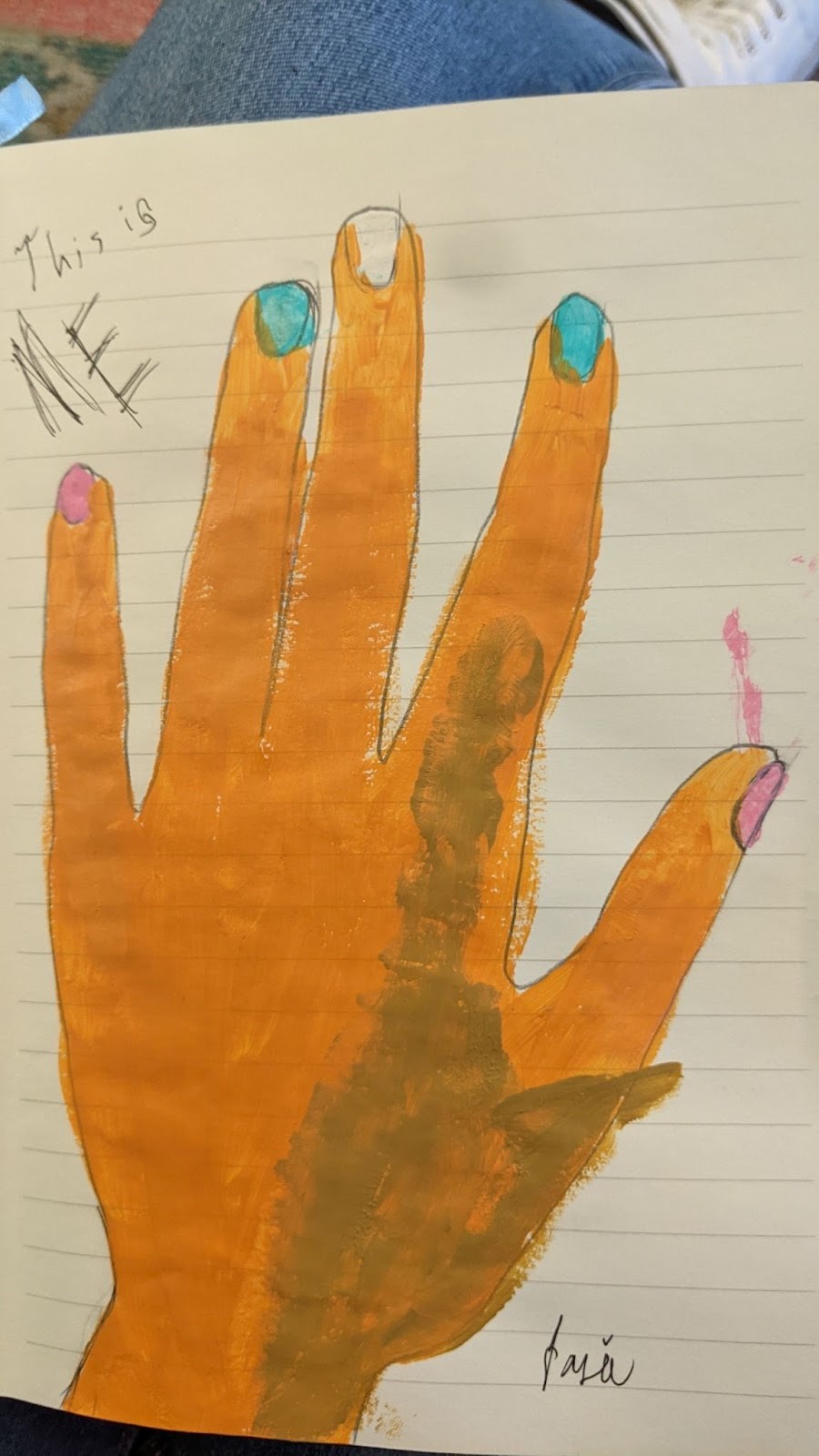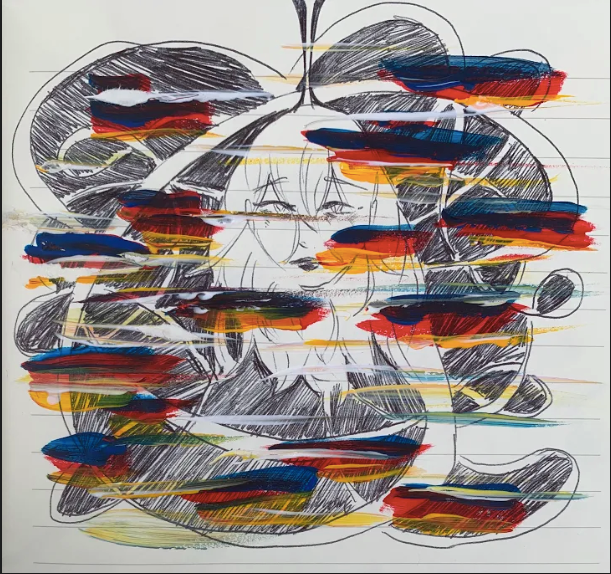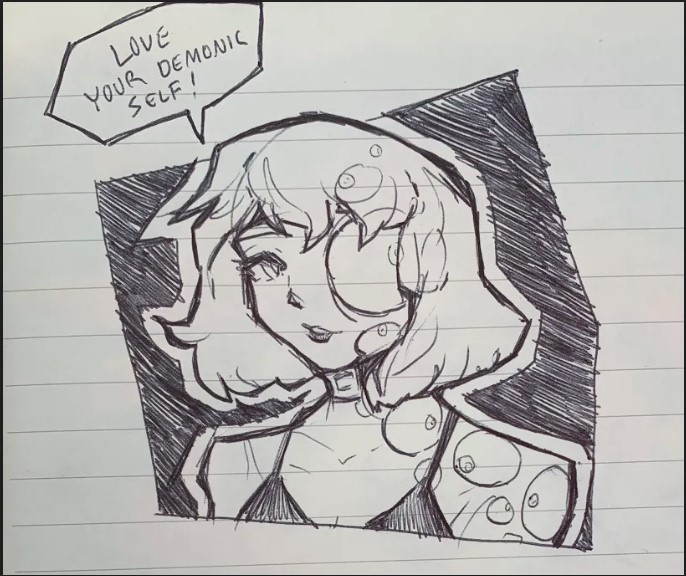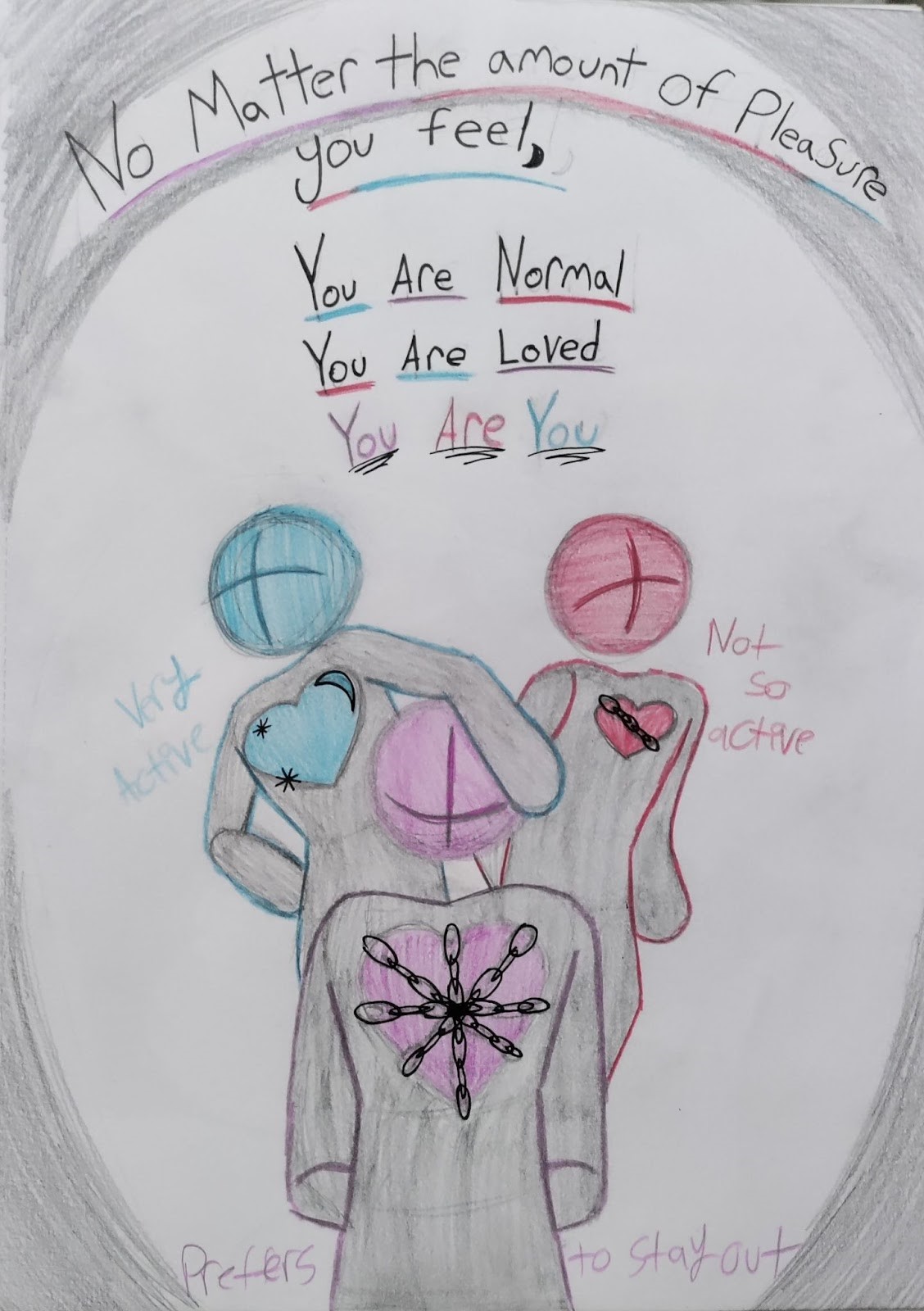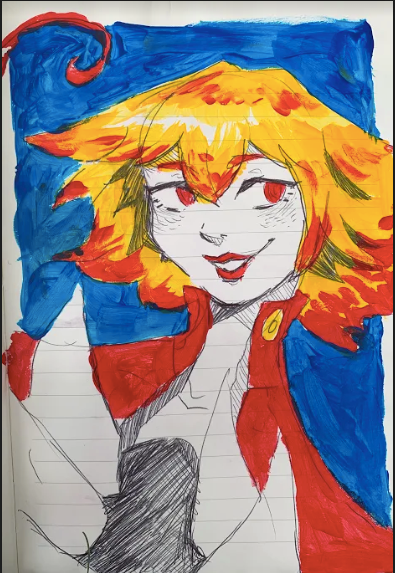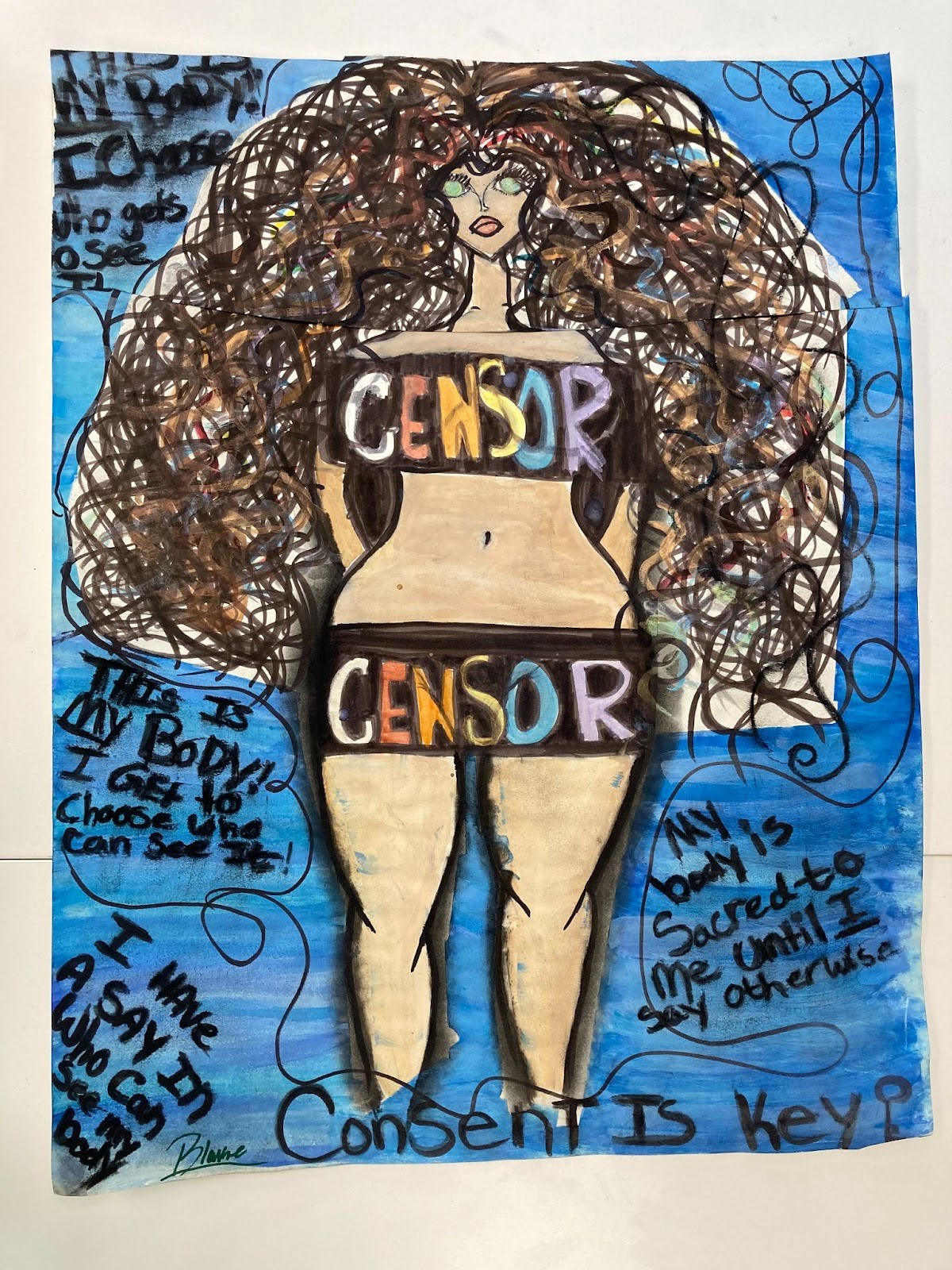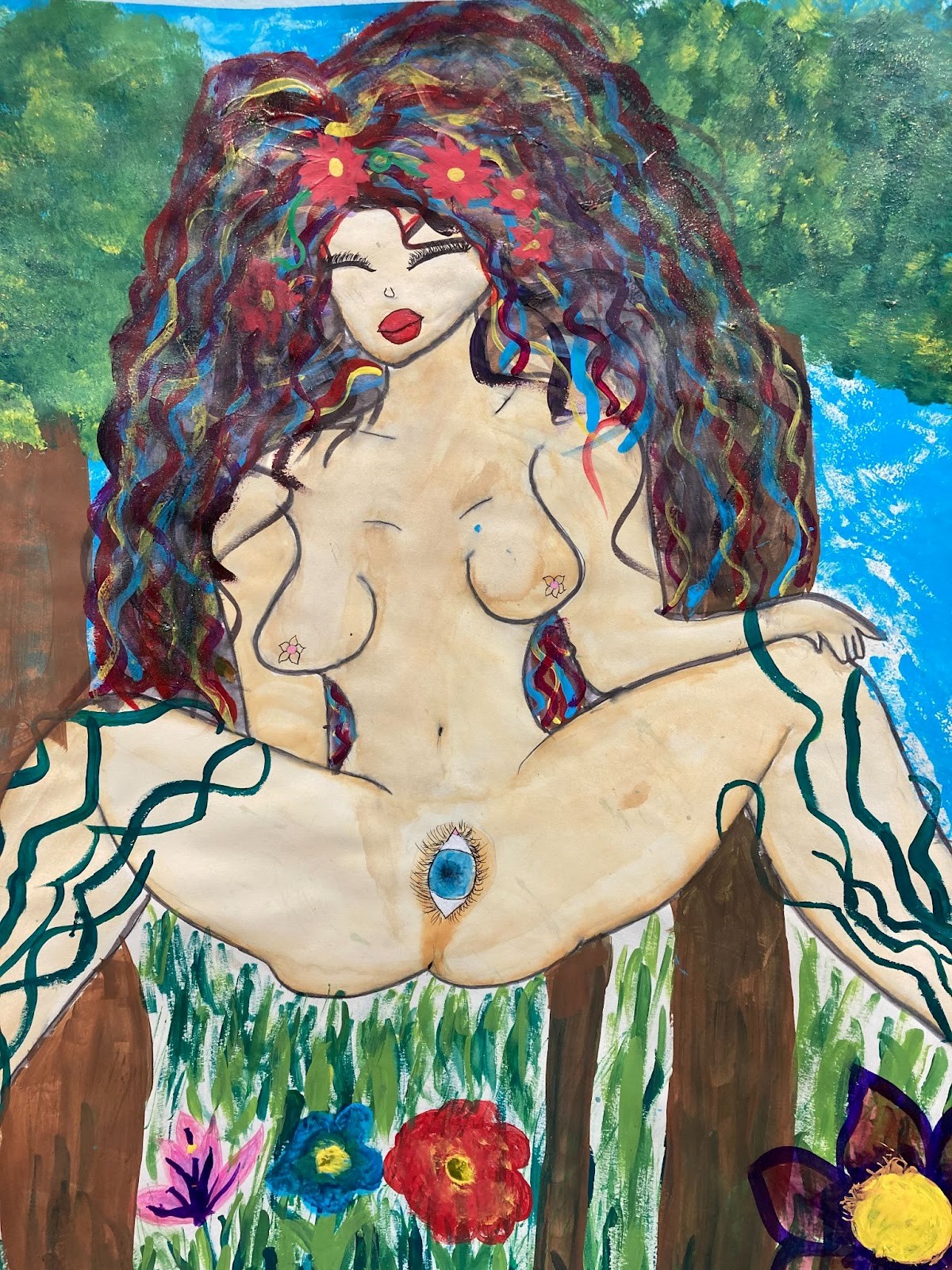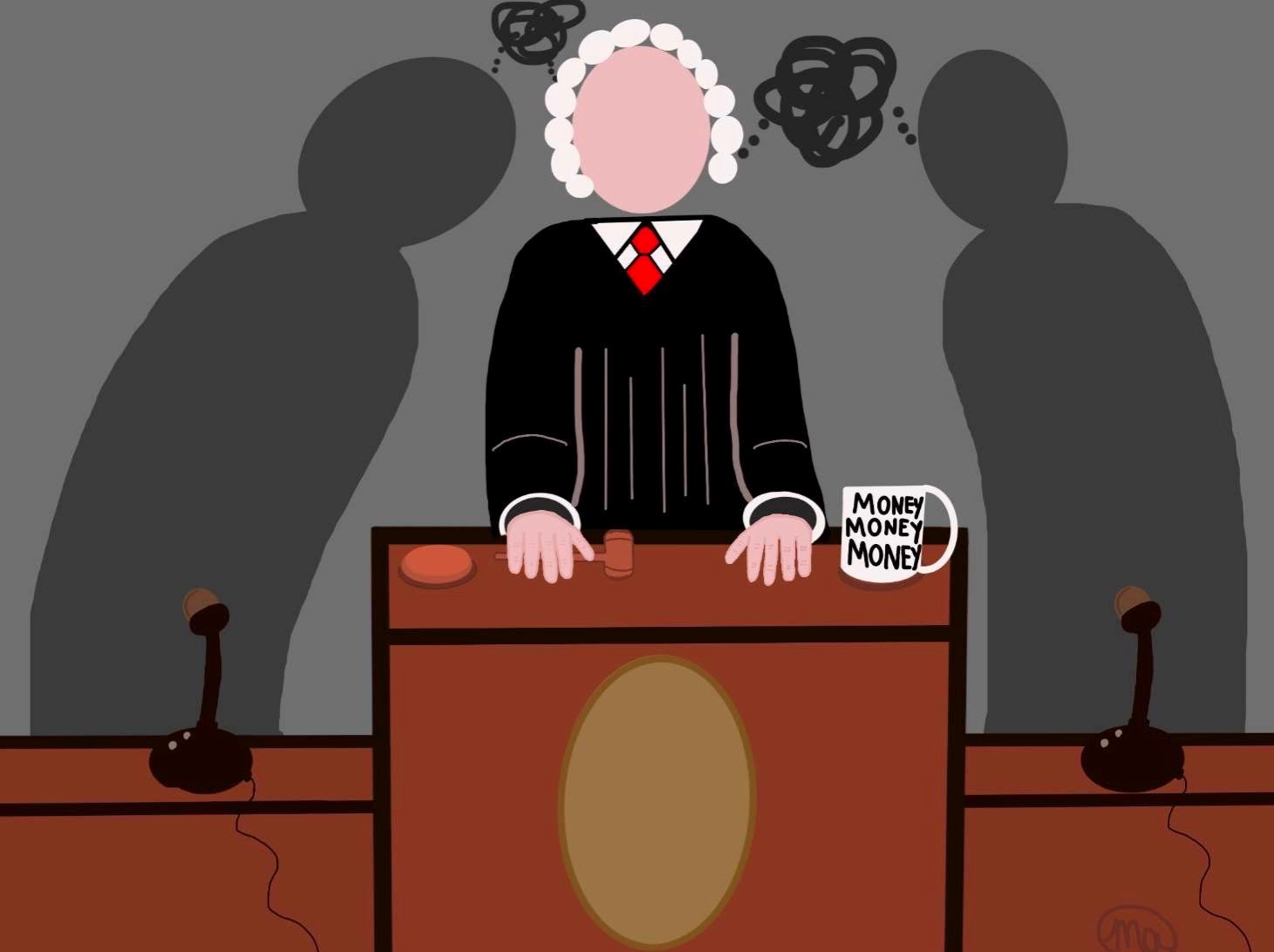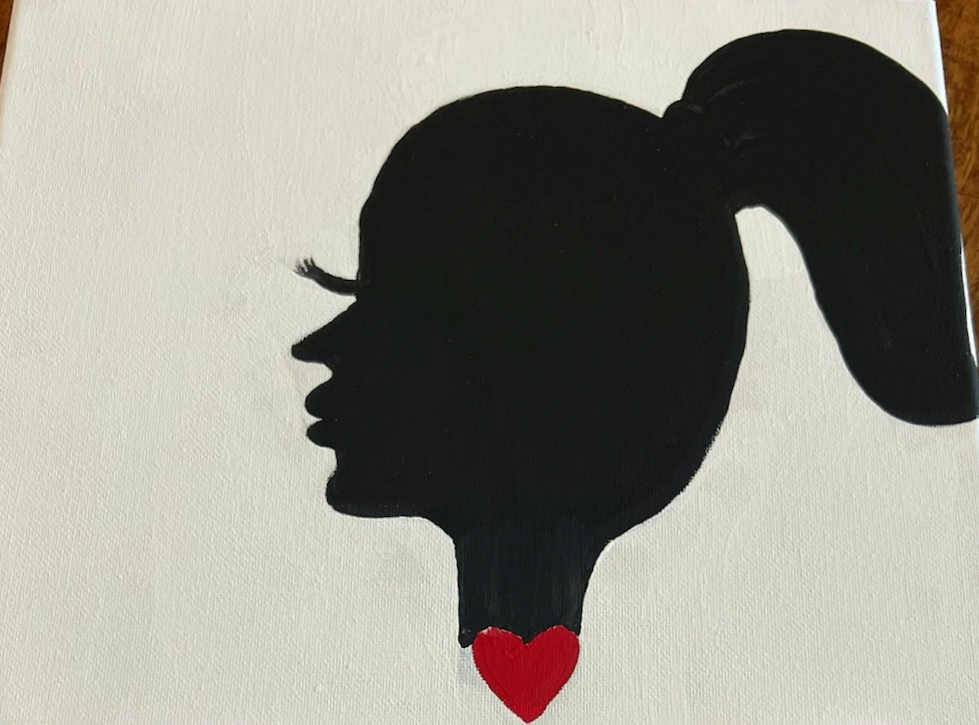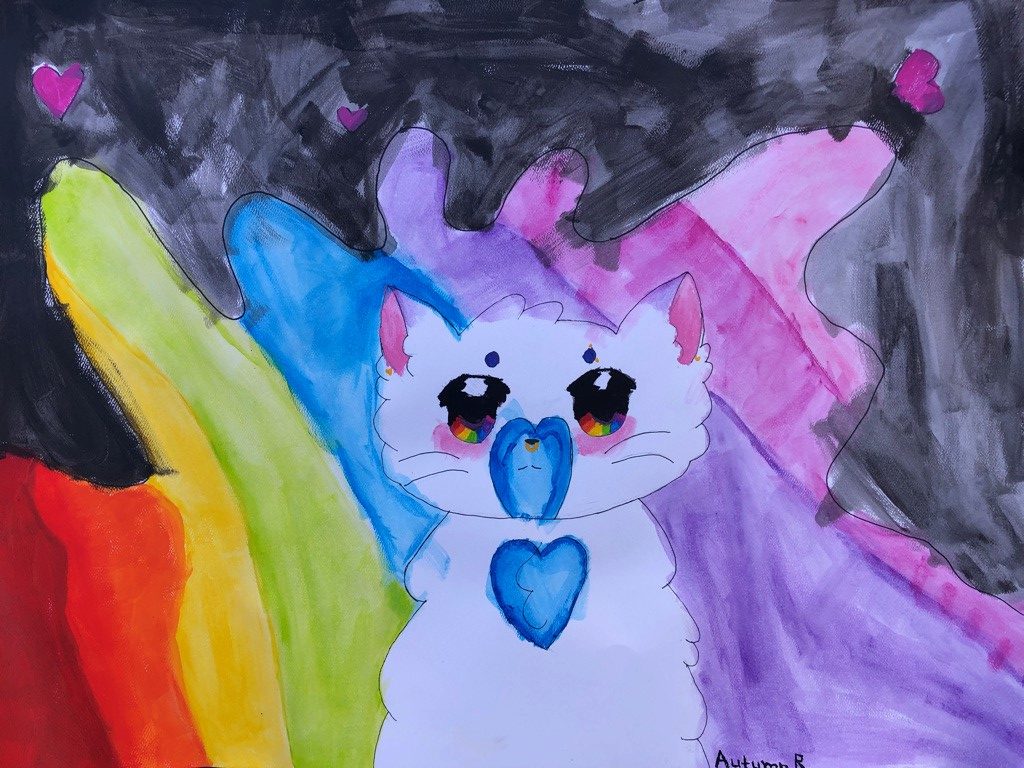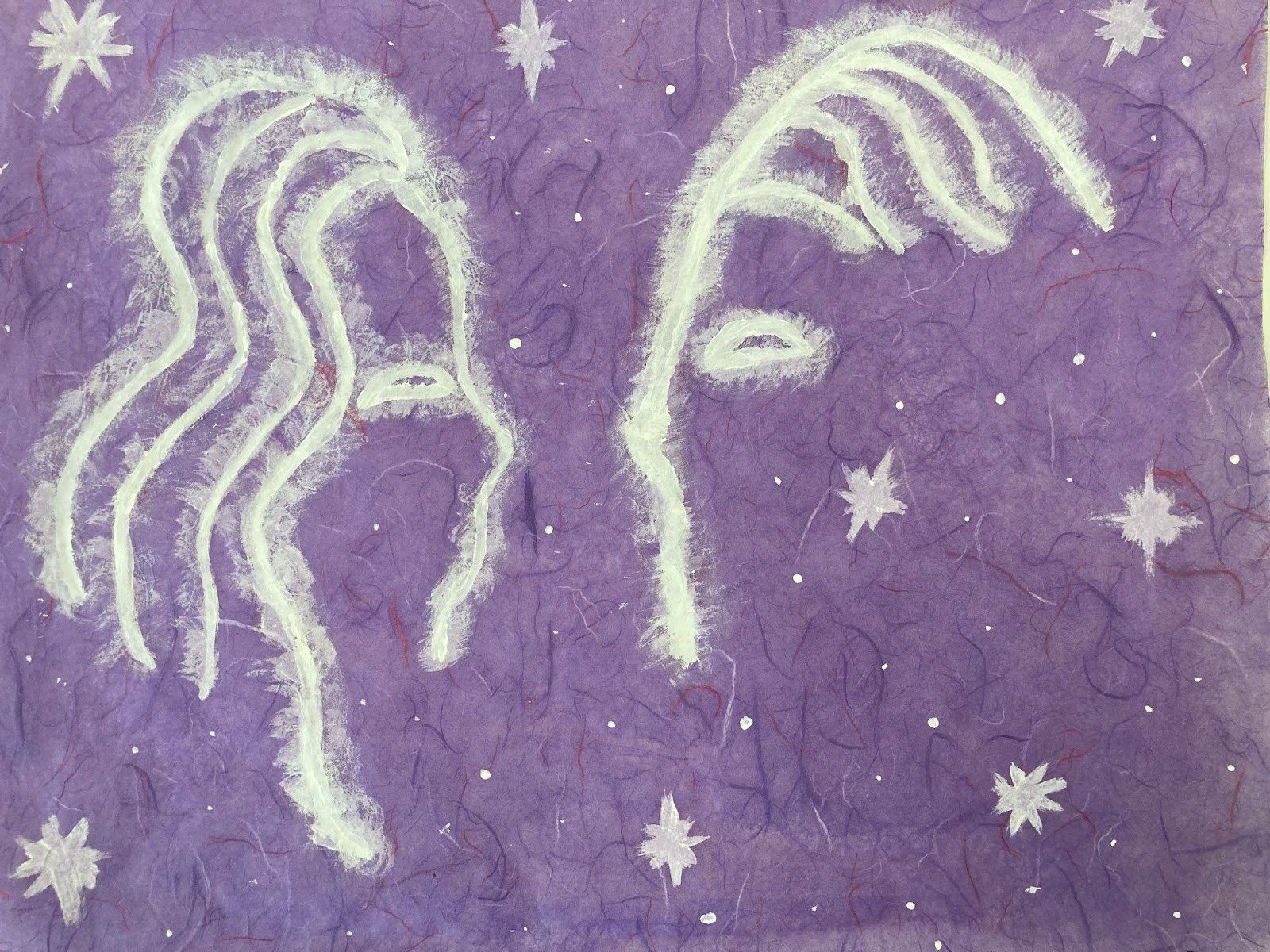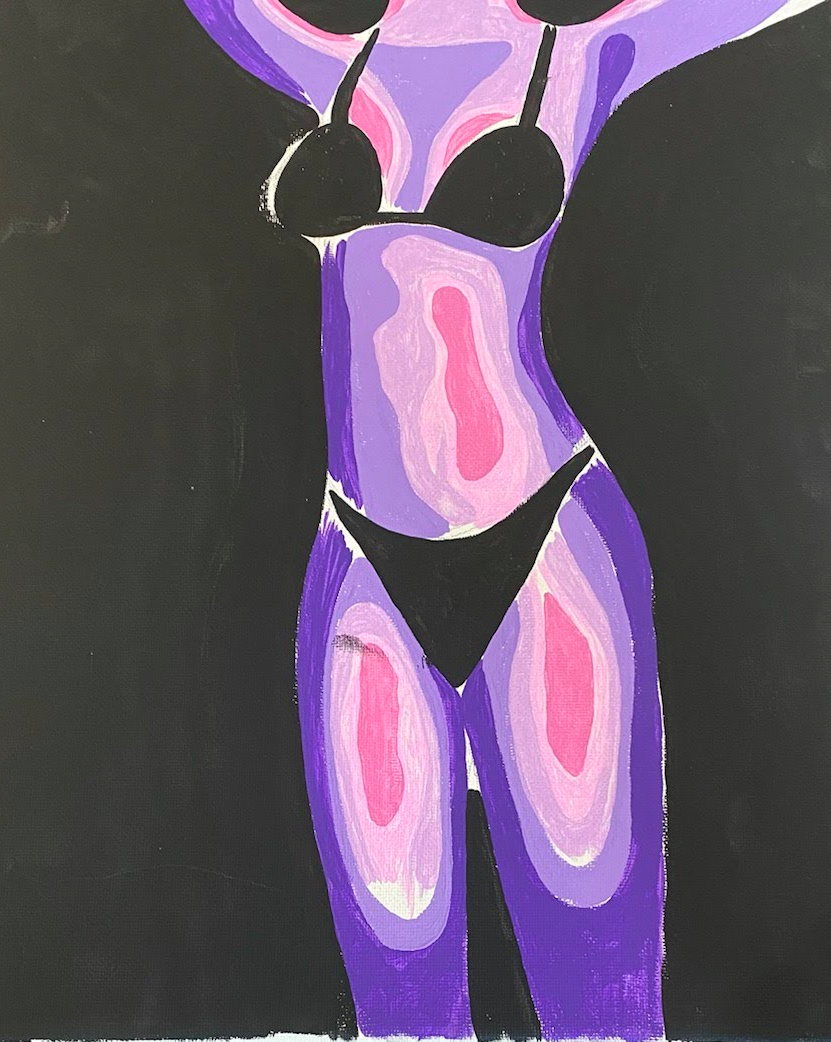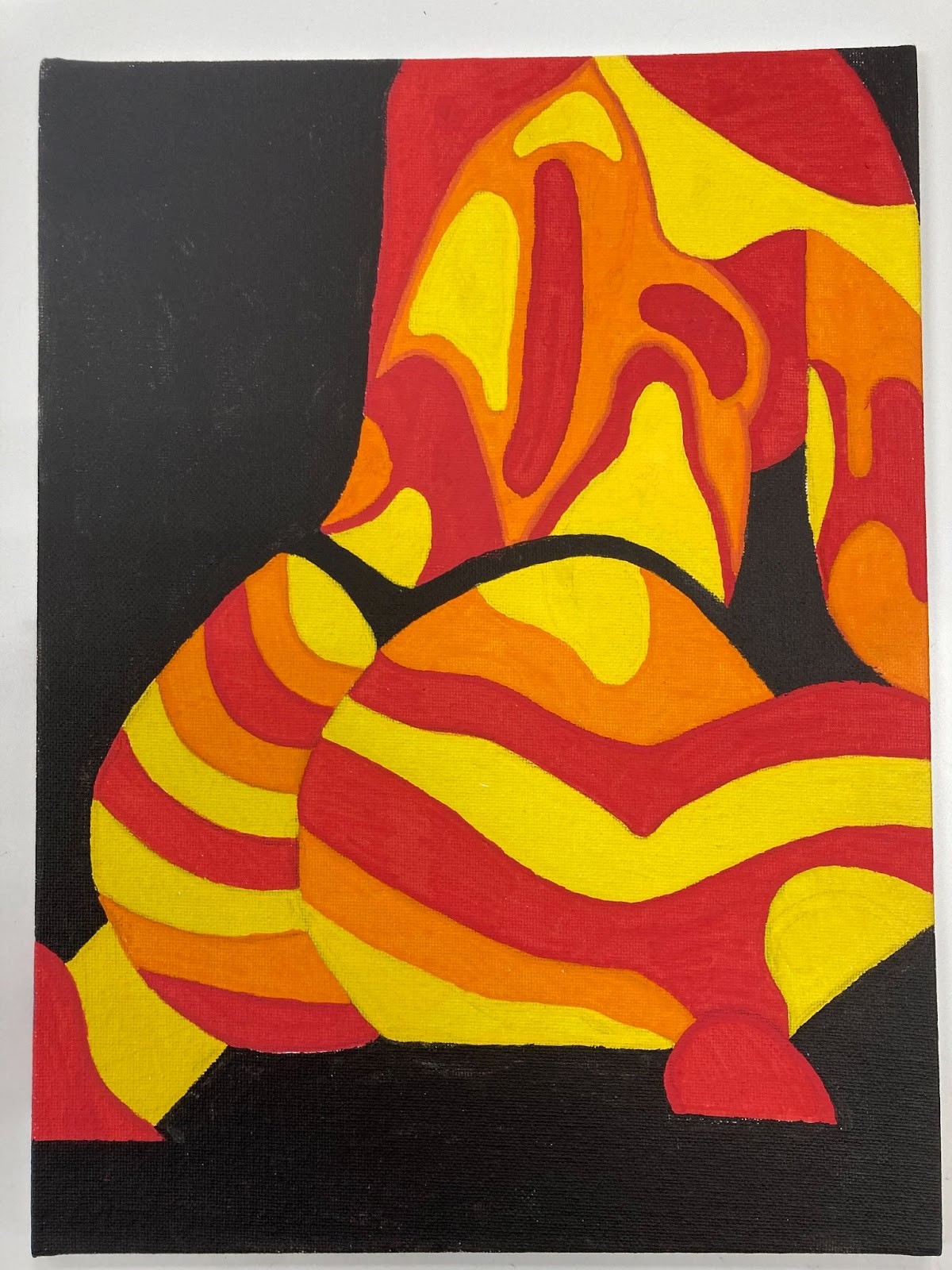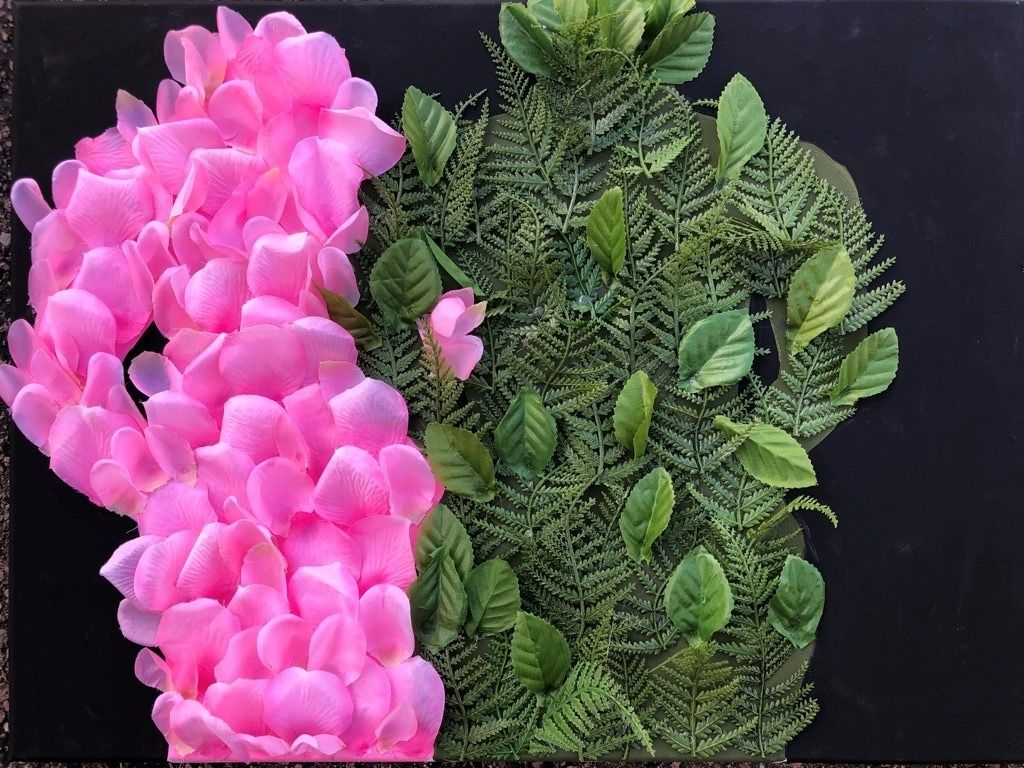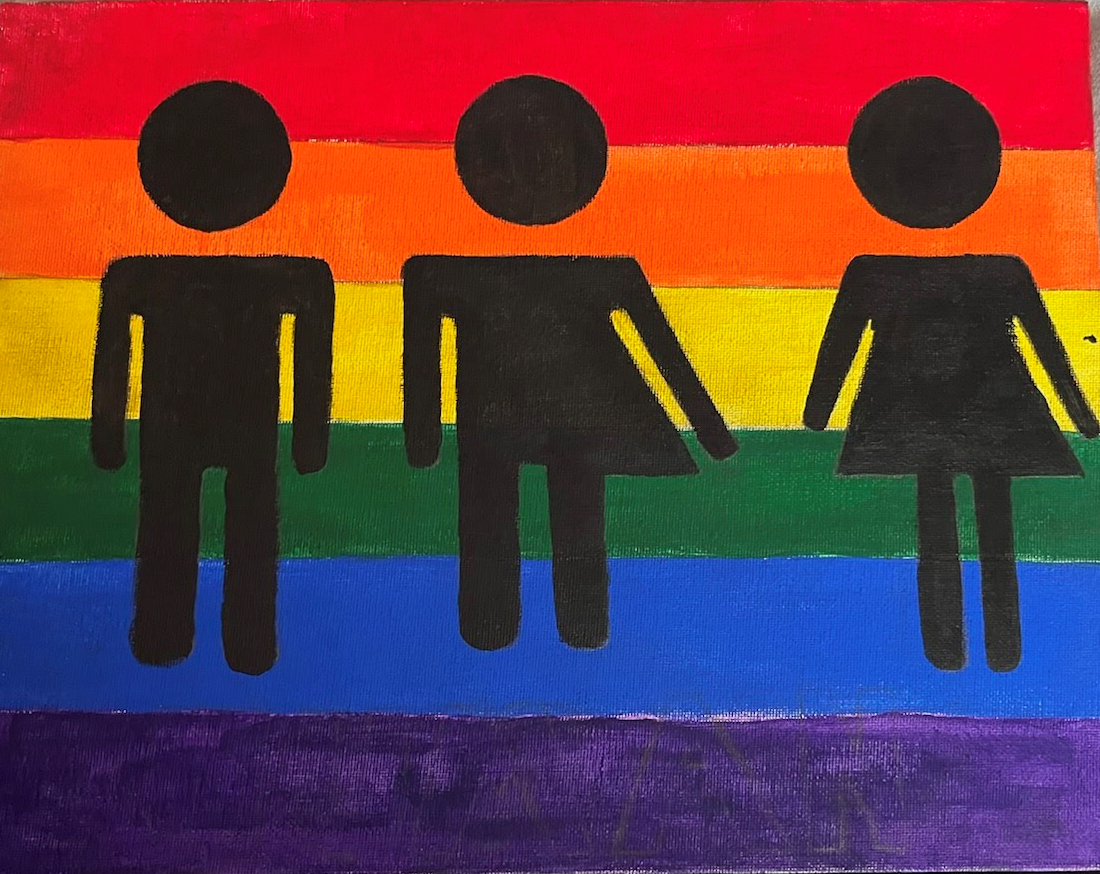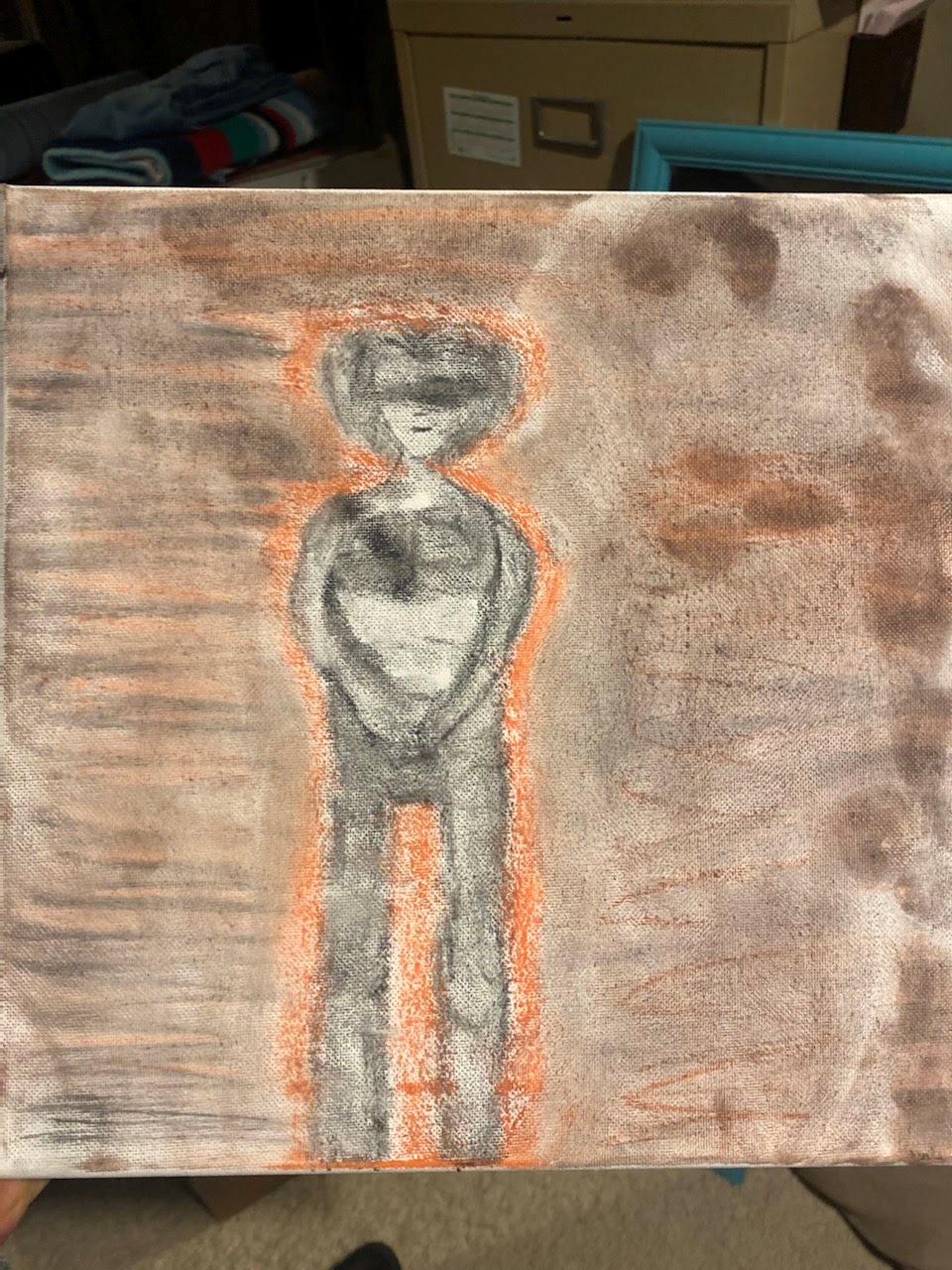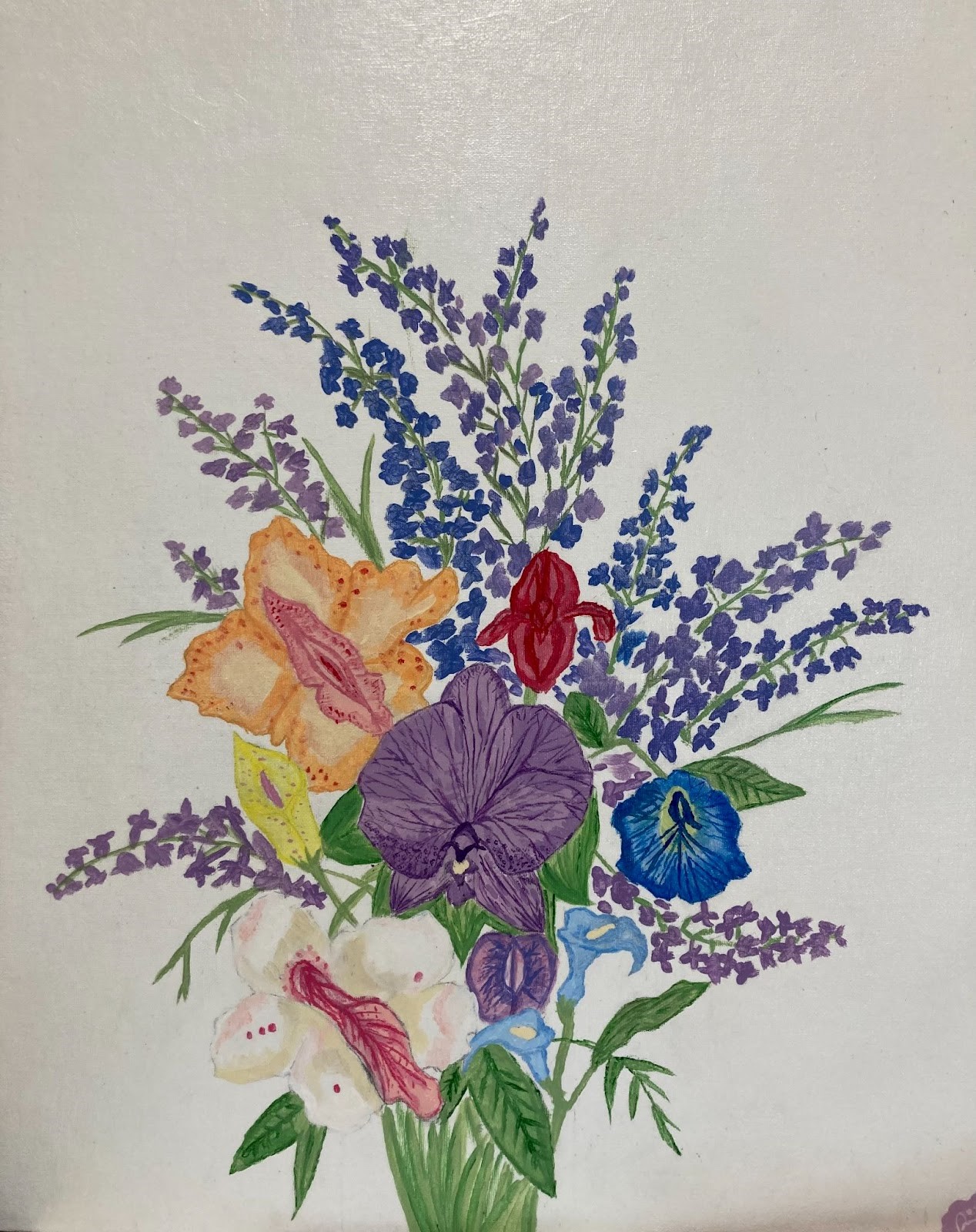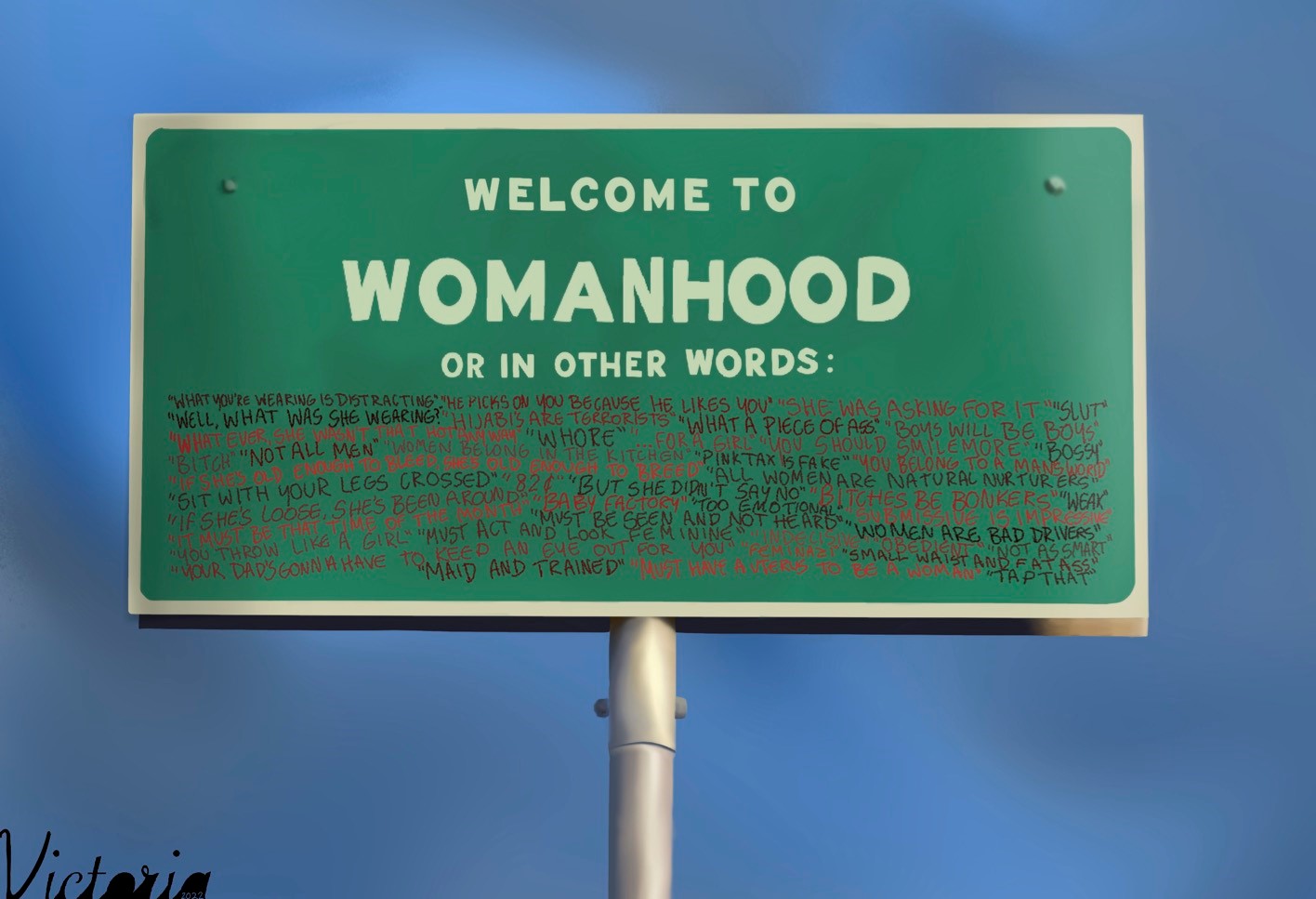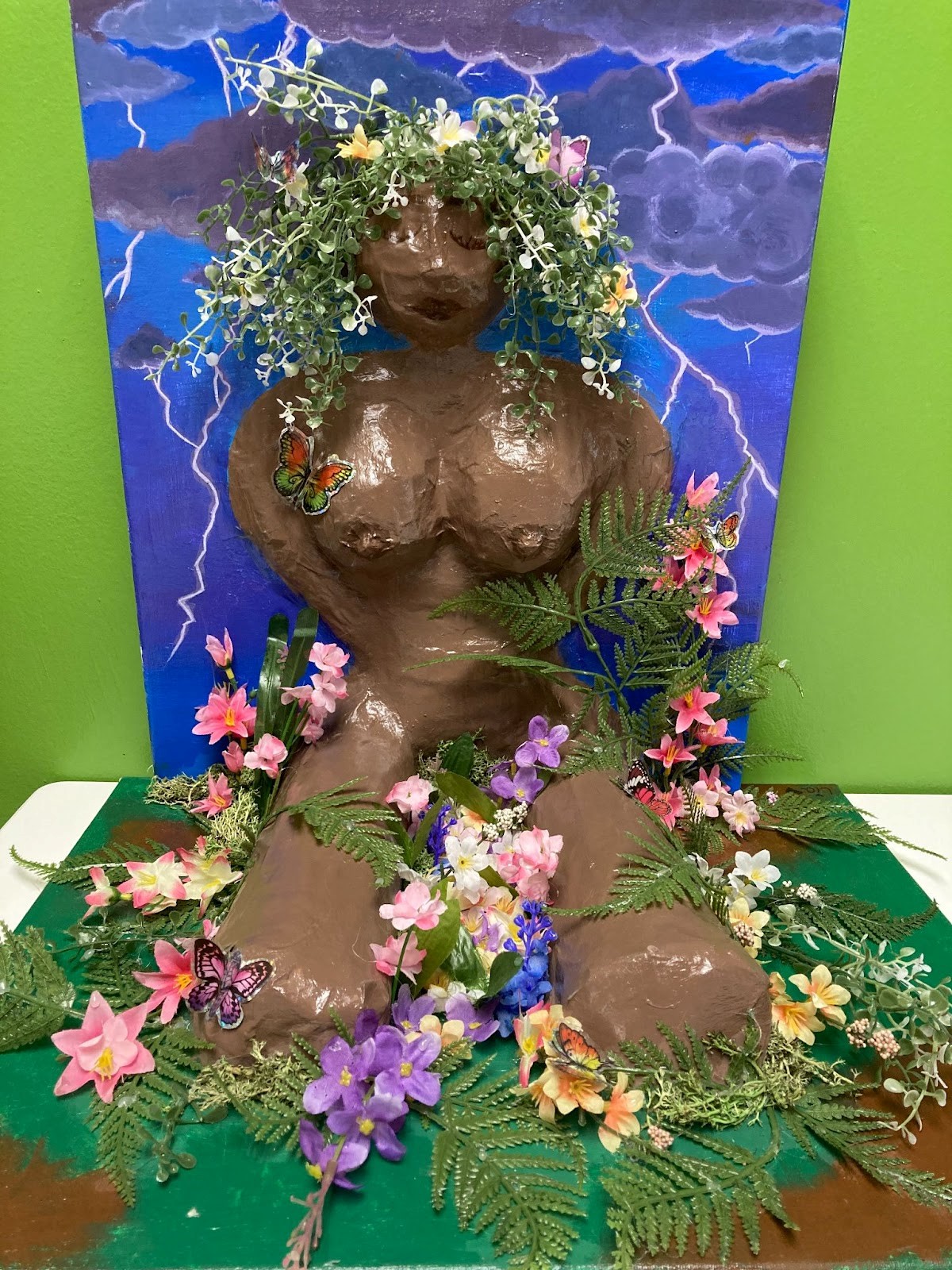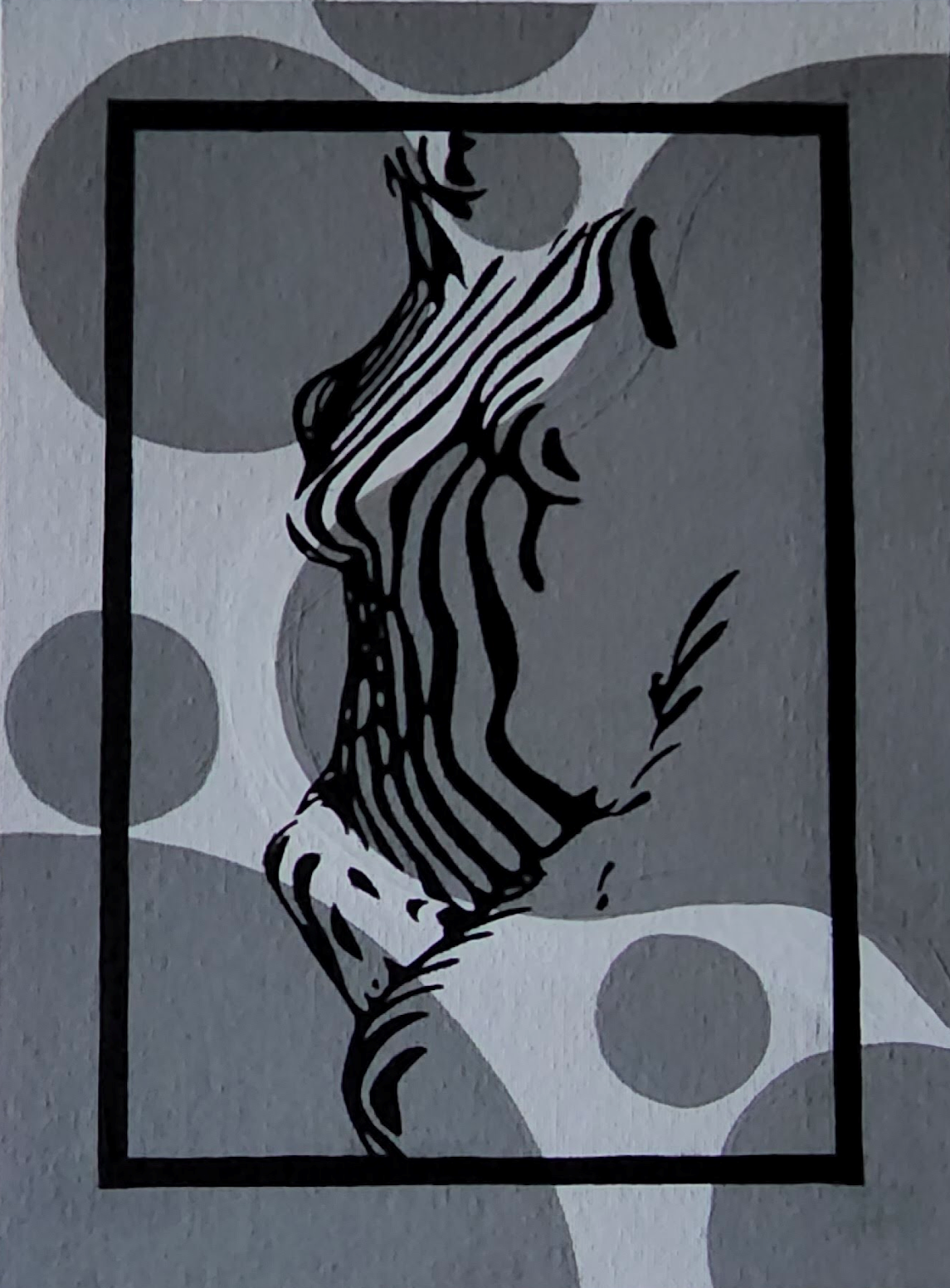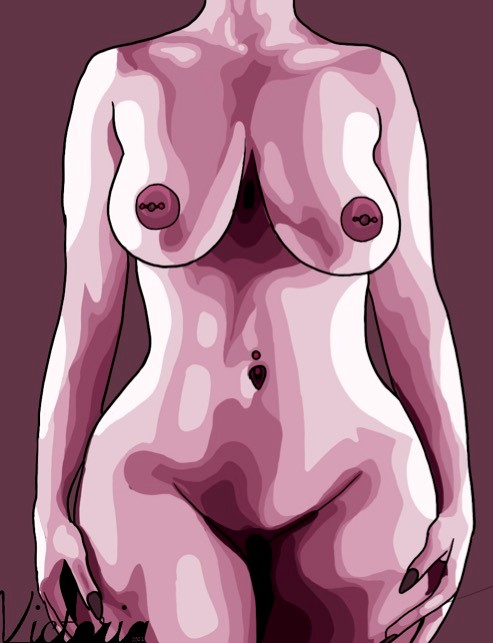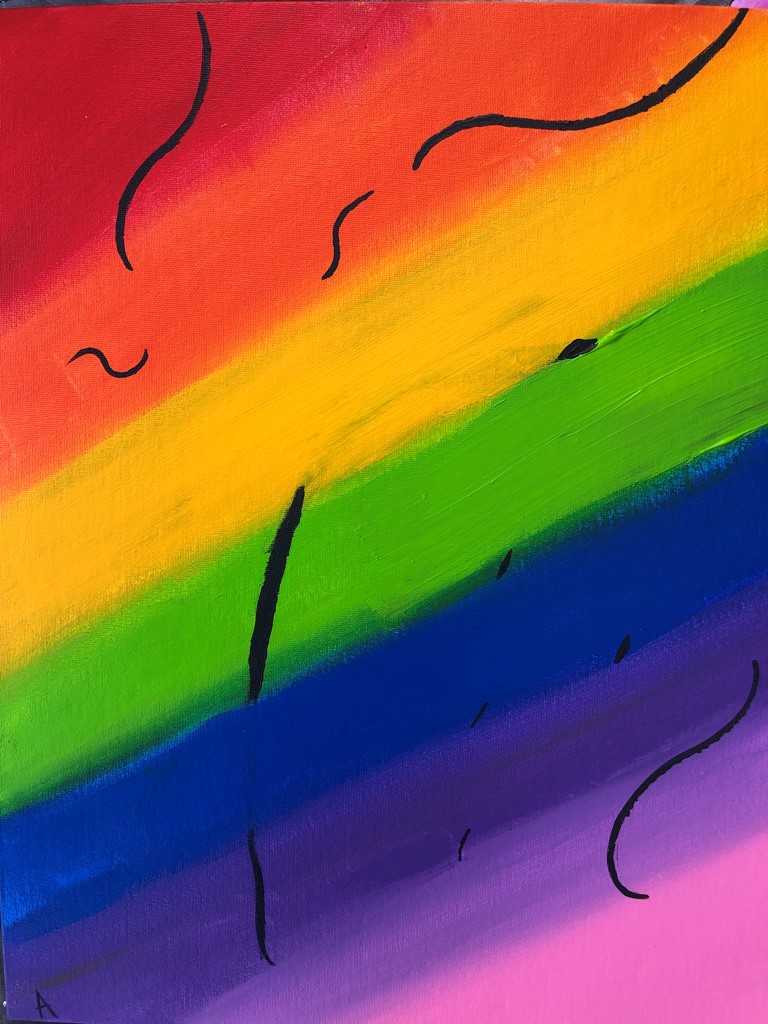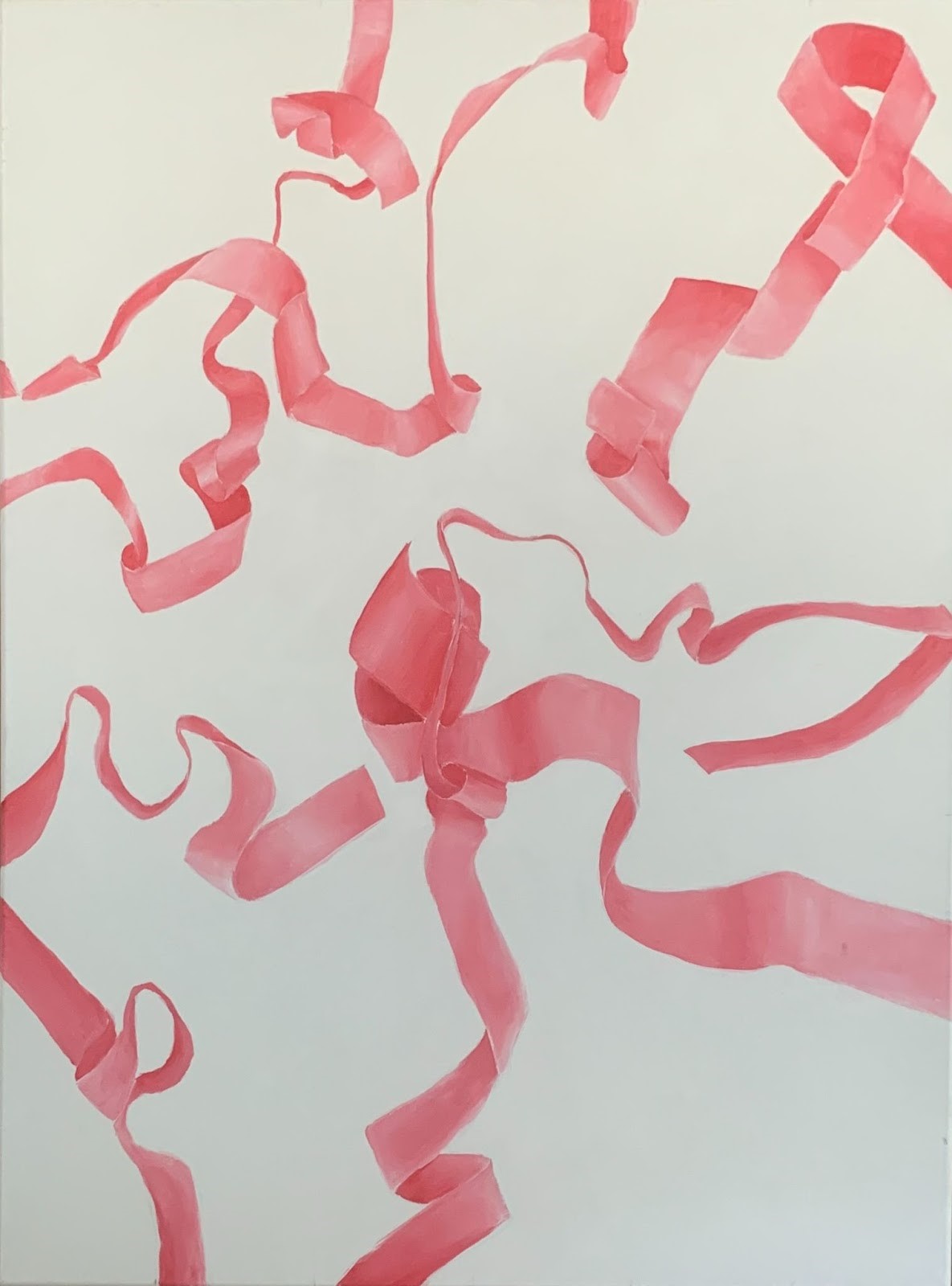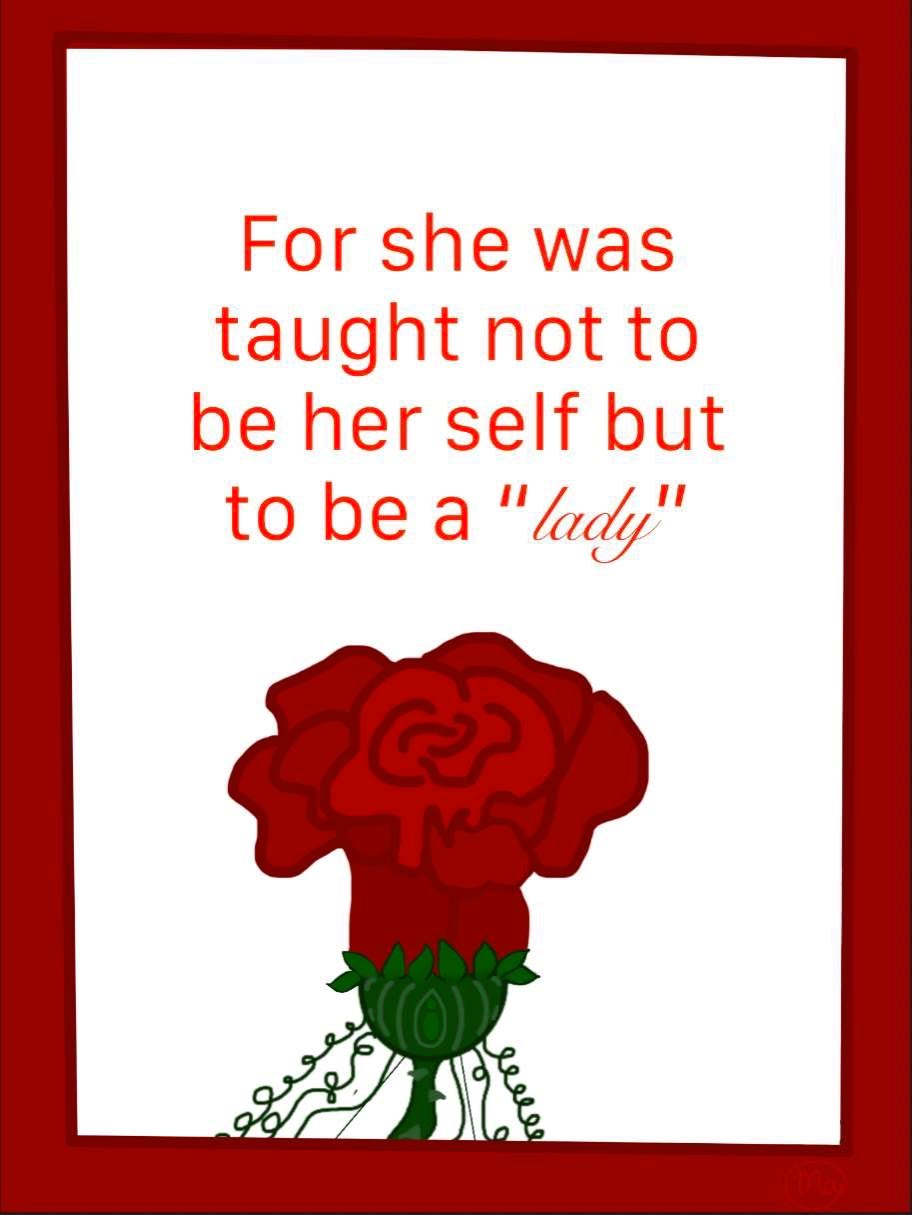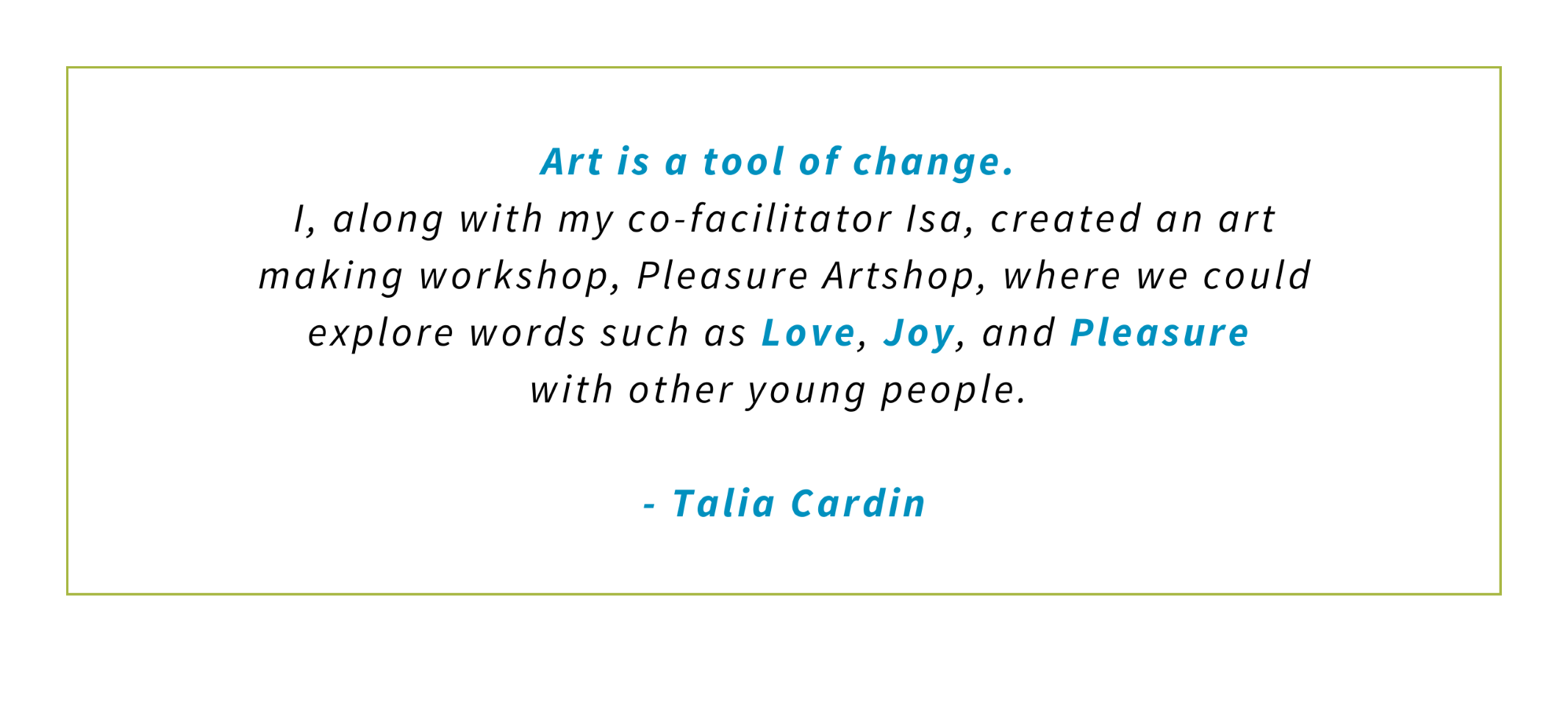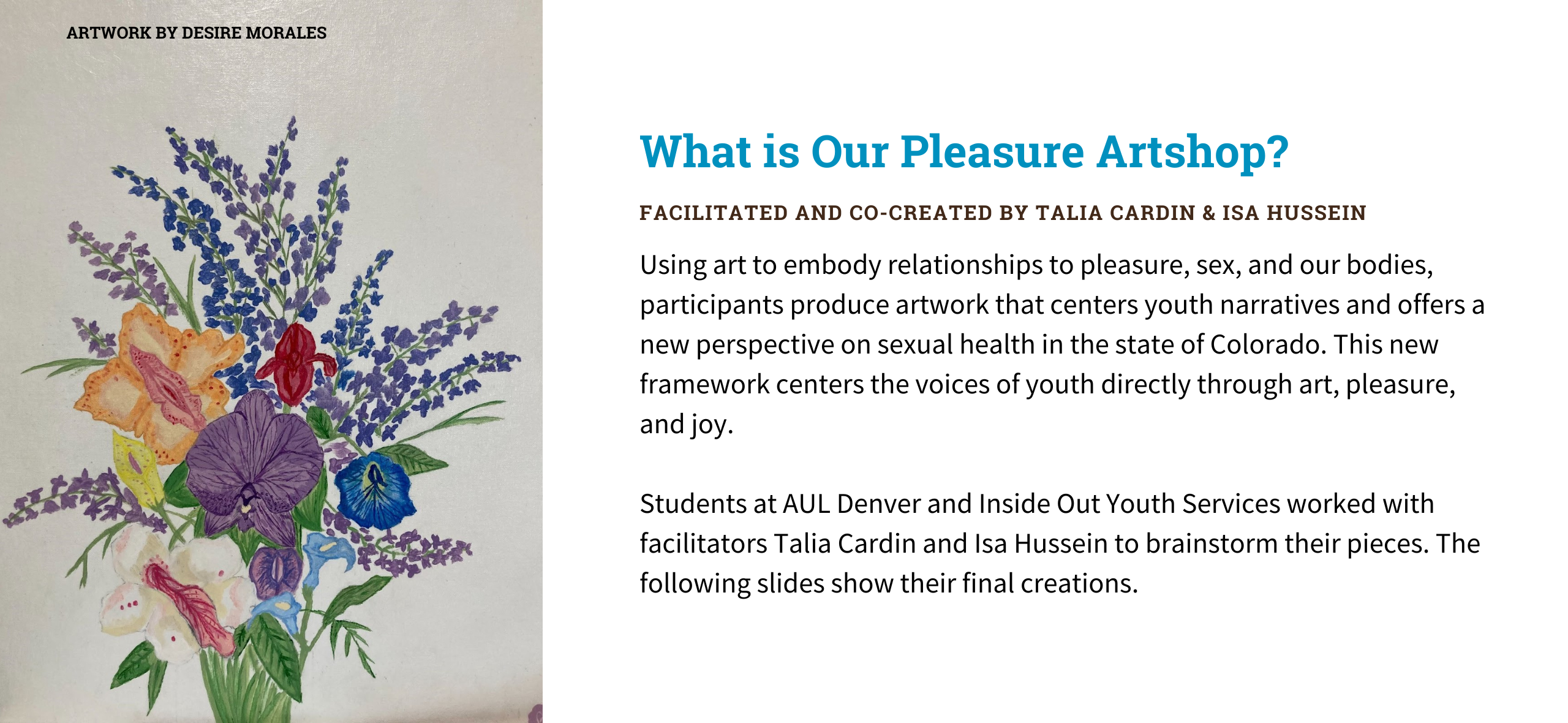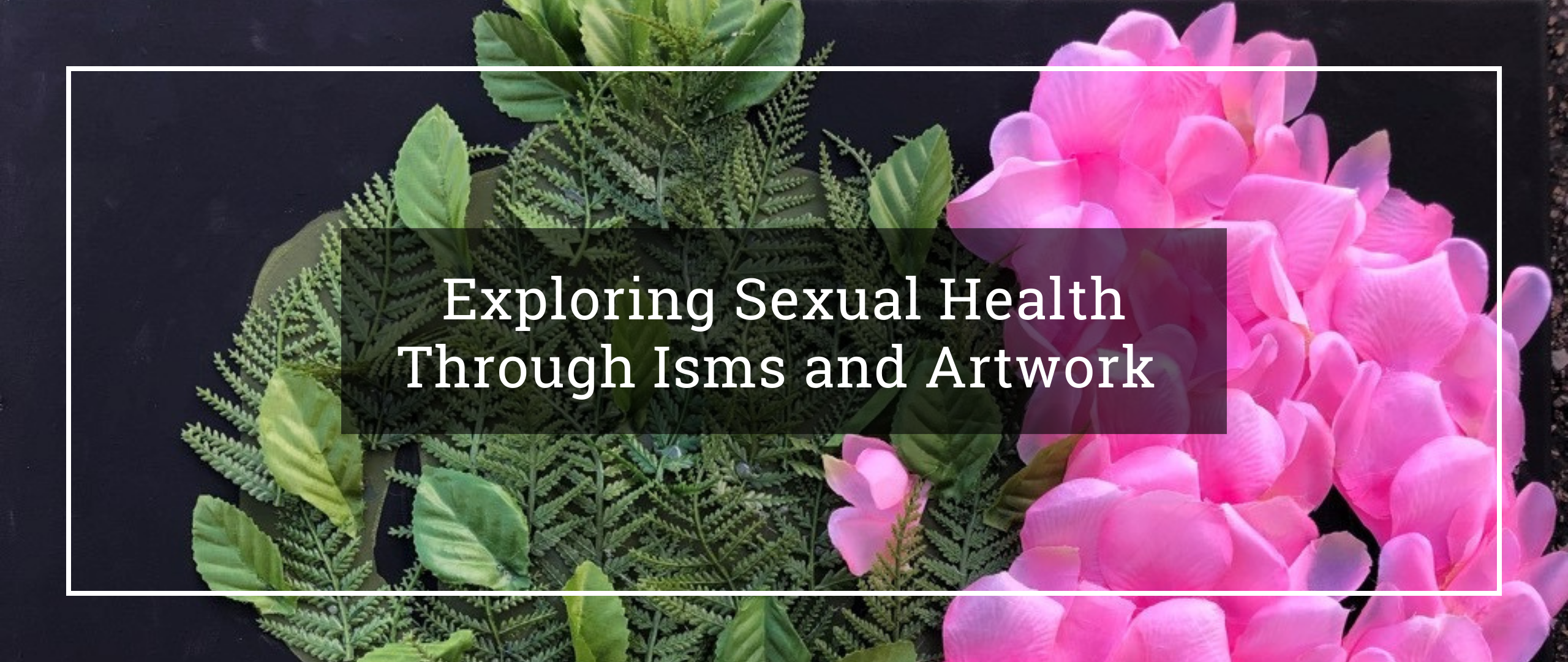In May 2022, Talia Cardin, a youth facilitator collaborating with Tomei Kuehl (Consulting Within Your Context) and Trailhead’s Youth Sexual Health Program, and Isa Hussein, a youth member of the Youth Sexual Health Program Board, facilitated two art workshops with students at AUL Denver and Inside Out Youth Services in Colorado Springs. The workshops invited students to produce a work of art that embodies their relationships to pleasure, sex, and their bodies using a framework that centers the voices of youth directly through art, pleasure, and joy.
The artworks produced by students at AUL Denver and Inside Out Youth Services will be featured in the forthcoming 2022 State of Adolescent Sexual Health Report (SASH) this fall. Under the guidance of the Youth Sexual Health Program Board, the SASH is evolving to center Youth voice and non-traditional forms of data including art and storytelling.
In Their Own Words:
Youth Art Workshop Reflections and Lessons Learned
From Talia Cardin, Youth Facilitator of Trailhead’s Youth Sexual Health Program Board
I am Talia Cardin (they/them). I am an artist, an activist, a young person, a change maker, and the youth facilitator for Trailhead and co-leader of this project. I create, envision, and love. I believe sex education is a vehicle for societal change, and an integral human right. Initially upon being hired by Trailhead I knew this report was an opportunity to privilege youth voices into decision making spaces, and had the power to alter how young people are able to engage with sex education. My participation and that of my peers in the creation of this report in itself models the reformation and ideal sexual health experience, where young people are regarded with dignity and respect, and have autonomy over our lives and education. Throughout this process, and all of my work, I promote an intentional centering of young people through equitable youth adult power dynamics. Throughout this process I have brought my lived experience as a young person to the table, but my voice alone is not representative of the nuanced experience my peers face in our daily lives, so I was constantly looking for more outlets to engage and center my peers.
Young people are affected daily by the intertwining systems of oppression that inform and constrict sexual education, so it is only right that we should be able to influence and control what information we learn and the lenses through which we access that information. Currently adults in positions of power are able to decide on our behalf what potentially life altering education and information we will engage with, without consulting us. This rendition of the SASH flips this power dynamic on its head through intentionally centering young people’s lived experience through art and storytelling.
Art is fundamentally opposed to the current systems of sex education that are centered in conformity and shame. Art is a form of storytelling that celebrates self-expression, it is a vehicle to span barriers and connect across countries and cultures. Art is a tool of change. I, along with my co-facilitator Isa, created an art making workshop, Pleasure Artshop, where we could explore words such as Love, Joy, and Pleasure with other young people.
This art workshop was a representation of an ideal form of sex ed, that celebrates the nuances of lived experience, expression, and exploration. Joy and pleasure are essential aspects of sexual health that are overlooked in curriculums that focus on fear, shame, and negative aspects of sexual health. In these workshops my peers and I explored our own personal definitions of pleasure, erotic, intimacy, love, and sex in comparison to the definitions of these words we have been taught. Many young people explored the relationship of their bodies, sexualities, and identities to the messages society sends about how they should be. We discussed how pleasure and the erotic can be a way to claim autonomy in one’s life, especially if you have not had autonomy over your body in other areas of life. We discussed the intersectionality of pleasure, and how it is not purely sexual, but can also look like living without fear in a black or brown body, or the right to not be sexual. Our conversations were supplemented with optional readings and reference artwork, such as “Uses of the Erotic: Erotic as Power” by Audre Lorde, All About Love by Bell Hooks, Pleasure Activism by Adrienne Marie Brown, Disability and Reproductive Justice by Mia Mingus, Healthy Sexuality by Native Youth Sexual Health Network, and Anishinaabekwe conception art-making by Quill Violet Christie-Peters.
We compensated my peers for their time and participation in the art workshop as well as for the rights to use their artwork. This was vital to maintain the equitable youth/adult power dynamic, as young people are rarely compensated for their time or expertise on projects similar to this. When you equitably compensate young people for their time, and enable creative pathways of engagement, we show up with force and thoughtful consideration, and create beautiful change.
To dream of a new approach to youth sexual health education – one that is focused on pleasure and joy – we must recognize how we arrived at where we are today. Here we explore the history that impacts sexual health and sex education, recognizing that these experiences are centered within an existing context rooted in colonialism, capitalism, racism, heteronormativity, ableism, classism, and other forms of oppression.
In our work with the Youth Sexual Health Program Board to reimagine Colorado’s State of Adolescent Sexual Health Report, the Board identified a need to define and provide historical context for these isms, noting that many of these concepts may not have negative connotations for some people. The blogs included here were researched, written, and produced by Tomei Kuehl with the aim of building awareness for how these isms impact the field of sexual health, and inspire reflection of how these systems of oppression broadly influence public health.
With Gratitude to the Youth Sexual Health Board
The facilitation of the Pleasure Artshops received the full support of the Youth Sexual Health Program Board who collectively expressed a desire for a greater inclusion of youth voice alongside the recommendations and forthcoming SASH report. It has been a gift to work alongside the Youth Sexual Health Board Members, who have consistently advocated for centering youth experiences, pleasure, and joy in this work. Thank you.
